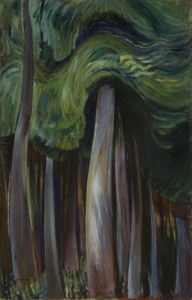 It was 1963 and I was eight years old. Our Boy Scout den leader took us into the bush, in the oil country of the Alberta foothills, out past the last town, past the little hamlet of Lodgepole where we lived, into something that might be called wilderness.
It was 1963 and I was eight years old. Our Boy Scout den leader took us into the bush, in the oil country of the Alberta foothills, out past the last town, past the little hamlet of Lodgepole where we lived, into something that might be called wilderness.
One by one we were blindfolded and walked some distance into the bush. I was taken to my assigned spot in the wild and left until den leader called out, “OK, go!” and I could whip off the blindfold and begin finding my way out.
The first instinct, of course, was to go in the direction I heard my den leader’s voice. But within a few steps I wasn’t sure of that anymore. Then I realized that he wouldn’t just stand out on the road — he would be moving, or watching from somewhere secret, and was really no help.
I grasped at what we had been taught about the sun’s position, about moss on trees. I grasped at bits of learning from Hardy Boys mysteries, wishing I had paid more attention to how they read nature’s signs with cool aplomb. A wave of anxiety washed through the towering pines. I was not a skilled sleuth finding my way through a forest. I didn’t have a damn clue.
I re-imagine it now as a swirl of Tom Thomson and Emily Carr trees — animated, active trees moving in contorted sweeps of needles and tongues. But of course at the time it was not artistic or impressionistic — it was visceral and scary.
In the bush, among stumps and tangles and sticky sap and buzzing insects, there was no apparent order. No sense that nature was caring for me or that I should give any thought to caring for it. My only concern was myself and I quickly felt myself shrinking in a vastly expanding world. I might have been just half a mile from an oil lease road, a few miles out of Lodgepole, a couple hundred from the capital of Edmonton. But I was lost in a chaotic world.
As you might suppose from this article, I survived my orienteering experience in the bush. Over the intervening decades, I have maintained a healthy respect for the power of natural forces. I even profess a love of nature.
But as that “training” proved, I am essentially a town boy — one who gazes at Discovery Channel documentaries of our galaxy more often than he gets out of town to stand in the dark and gaze at the stars. One who reads Bill Bryson’s A Short History of Nearly Everything to patch together a layperson’s understanding of the cosmos, nature, and our earth rather than bushwhacking into the back country.
My relationship with nature has grown into one of healthy respect. I work at helping our society make the giant, slow turn away from over-consumption of energy and natural resources. I think we need trees more than SUVs, fresh water more than fertilizer, mountains more than metal smelters. This force, this energy, this presence we call nature is worthy of our awe, our respect and our best care.
At the same time, I see that human life on this particular planet is a miniscule enterprise. While appalled at our abuse of the earth, I take comfort in knowing that nature will live on long after we are gone.
It is a much greater force than I — and at the same time nature and I are inseparable.
For even back in that confusion of western Alberta bush in 1963, I realize now, nature was not something I was scrambling through to find my way. There was no place ‘beyond’ nature.
Nature was the way. Nature was pumping through me, in every elevated heart beat and every bead of sweat.
I should not have worried.
Photo Credits
Image of “Forest,” 1931-33, Emily Carr, oil on canvas.
Collection of the Vancouver Art Gallery, Emily Carr Trust. Photo: Trevor Mills, Vancouver Art Gallery


Thanks Kate & Sarah!
Nice post Lorne! Thanks for sharing.
I think I would have been scared too!